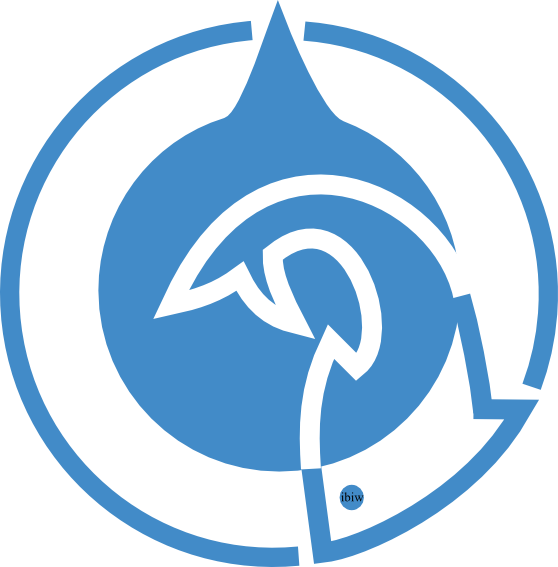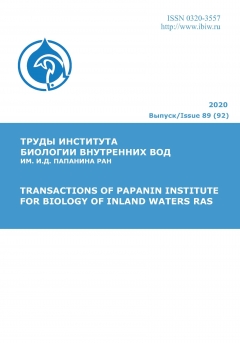The study of the patterns of blood serum proteins capillary exchange (CE) as a factor regulating water and osmotic homeostasis in the fish organism has been started using the example of goldfish Carassius auratus (L.). The analysis of the seasonal dynamics of the barrier properties of the muscle-type capillary wall to the blood serum protein has been carried out using the coefficient of the reflectance of total protein from the capillary wall (CW). The maximum values of the coefficient are calculated for spring, the minimum ones for summer, and the intermediate value for autumn. Such dynamics assume the most pronounced barrier function of the CW in spring and autumn, and the minimum one in summer during the period of preparation for spawning. The reason for this is a significant summer increase in the concentration of total protein in the interstitium of fish to a level comparable to that of blood serum and higher. This circumstance does not allow us to explain the seasonal dynamics of fish plasma protein capillary exchange within the framework of the classical Starling hypothesis, but fits well into the format of the albumin-free CE model developed for fish [Andreeva, 2020]. This model characterizes a decrease in the barrier function of CW as an adaptation for equalizing the osmolality of the body's internal fluids during the preparation of fish for spawning, which is characterized by high intensity of all metabolic processes.
goldfish, blood serum, interstitial fluid, capillary protein exchange, muscle-type capillary wall
1. Gaal' E., Med'eshi G., Vereckei L. Elektroforez v razdelenii biologicheskih makromolekul. M.: Mir, 1982. 448 s.
2. Sakun O.F., Buckaya N.A. Opredelenie stadiy zrelosti i izucheniya polovyh ciklov ryb. M.: Rybnoe hozyaystvo, 1968. S. 36.
3. Chernuh A.M., Aleksandrov P.N., Alekseev O.V. Mikrocirkulyaciya. M.: Medicina, 1984. S. 432.
4. Andreeva A.M. Structural organization of plasma proteins as a factor of capillary filtration in Pisces (review) // Inland Water Biol. 2020. Vol. 13. P. 664–673. DOI:https://doi.org/10.1134/S1995082920060036.
5. Andreeva A.M., Lamash N.E., Serebryakova M.V., Ryabtseva I.P. Seasonal dynamics in capillary filtration of plasma proteins in eastern redfins of the genus Tribolodon (Cyprinidae) // J. Ichthyol. 2015. Vol. 55. P. 723–733. DOI:https://doi.org/10.1134/S003294521505001X.
6. Andreeva A.M., Ryabtseva I.P., Bol’shakov V.V. Analysis of permeability of capillaries of various parts of the microcirculatory system to plasma proteins in some representatives of bony fish // J. Evol. Biochem. Physiol. 2008. Vol. 44, № 2. P. 251–253. DOI:https://doi.org/10.1134/S002209300802014X.
7. Andreeva A.M., Vasiliev A.S., Toropygin I.Y. et al. Involvement of apolipoprotein A in maintaining tissue fluid balance in goldfish Carassius auratus // Fish Physiol. Biochem. 2019. Vol. 45. P. 1717–1730. DOI:https://doi.org/10.1007/s10695-019-00662-1.
8. Bulat M., Klarica M. Fluid filtration and reabsorption across microvascular walls: control by oncotic or osmotic pressure? (secondary publication) // Croatian Medical J. 2014. Vol. 55. P. 291–298.
9. Itzhaki R.F., Gill D.M. A microbiuret method for estimating proteins // Anal. Biochem. 1964. Vol. 9. R. 401–410.
10. Koltowska K., Betterman K.L., Harvey N.L., Hogan B.M. Getting out and about: the emergence and morphogenesis of the vertebrate lymphatic vasculature // Development. 2013. Vol. 140. P. 1857–1870. DOI:https://doi.org/10.1242/dev.089565.
11. Levick J., Michel C. Microvascular fluid exchange and the revised Starling principle // Cardiovasc. Res. 2010. Vol. 87. P. 198–210. DOI:https://doi.org/10.1093/cvr/cvq062.
12. Michel C.C. Starling: The formulation of his hypothesis of microvascular fluid exchange and its significance after 100 years // Exp. Physiol. 1997. Vol. 82. P. 1–30. DOI:https://doi.org/10.1113/expphysiol.1997.sp004000.
13. Michel C.C., Phillips M.E. Steady-state fluid filtration at different capillary pressures in perfused frog mesenteric capillaries // J. Physiol. 1987. Vol. 388. P. 421–435. DOI:https://doi.org/10.1113/jphysiol.1987.sp016622.
14. Nguyen M.K., Kurtz I. Quantitative interrelationship between Gibbs-Donnan equilibrium, osmolality of body fluid compartments, and plasma water sodium concentration // J. Appl. Physiol. 2006. Vol. 100. P. 1293–1300. DOI:https://doi.org/10.1152/japplphysiol.01274.2005.
15. Olson K.R. Blood and extracellular fluid volume regulation: role of the renin-angiotensin system, kallikrein-kinin system, and atrial natriuretic peptides // Fish Physiol. 1992. Vol. 12. Part B. P. 135–254. DOI:https://doi.org/10.1016/S1546-5098(08)60010-2.
16. Olson K.R. Design and physiology of capillaries and secondary circulation. Circulatory Fluid Balance and Transcapillary Exchange // Encyclopedia of Fish Physiology. 2011. P. 1154–1160.
17. Olson K.R., Kinney D.W., Dombkowski R.A., Duff D.W. Transvascular and intravascular fluid transport in the rainbow trout: Revisiting Starling's forces, the secondary circulation and interstitial compliance // J. Exp. Biol. 2003. Vol. 206. P. 457–467. DOI:https://doi.org/10.1242/jeb.00123.
18. Perl W. Convection and permeation of albumin between plasma and interstitium // Microvascular Res. 1975. Vol. 10. P. 83–94. DOI:https://doi.org/10.1016/0026-2862(75)90022-9.








